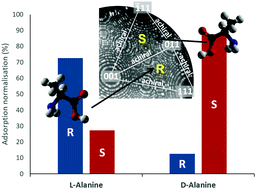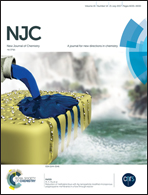Chiral adsorption studied by field emission techniques: the case of alanine on platinum
Abstract
Chirality at surfaces has become an active research area targeting possible applications of enantioselective separation or detection. Here, we propose a promising route for obtaining fundamental understanding of the enantiospecific interaction of chiral molecules on metal surfaces using field emission techniques, i.e. field ion microscopy (FIM) and field electron microscopy (FEM). These techniques have been chosen for their particular advantages in exposing a wide range of structurally different facets in one atomically resolved picture. This diversity allows the study of interactions between a chemical species and a number of facets during the adsorption process on the same sample. In the present study, we focused on the adsorption of alanine on platinum surfaces modelled as sharp tips and imaged by FIM and FEM. Our results show a clear preference of the alanine to adsorb on chiral facets. Although the 20 Å resolution of the FEM does not allow the edges of the facets of interest to be unraveled, the net images after exposure to one enantiomer of alanine show the occurrence of enantioselective adsorption over the sector of the same chiral symmetry. The results show that L-alanine has a strong tendency to adsorb onto R facets. Conversely, D-alanine adsorbs onto S facets.



 Please wait while we load your content...
Please wait while we load your content...